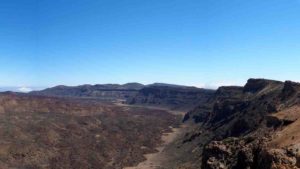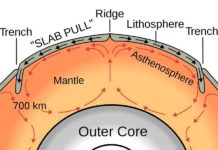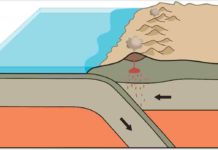
Las Cañadas caldera (Tenerife, Canary Islands) is the result of different episodes of caldera collapses, associated to large explosive eruptions that triggered several landslides that modified the shape of the walls of the Las Cañadas volcanic edifice, according to a new review study published recently in the journal Earth-Sciences Reviews. The study integrates in the same solution the two main proposed hypothesis that have focused the long lasting scientific debate about the origin of this volcanic caldera where Teide-Pico Viejo active volcanic complex is located.
Joan Martí, researcher at the Institute of Earth Sciences Jaume Almera (Spanish National Research Council, ICTJA-CSIC), is the lead author of this new review article which aims to offer a “plausible explanation” for the origin of Las Cañadas caldera based on the current evidences gathered from all previous studies. “This volcanic structure is a chain of large scale destructive events that have accompanied the evolution of Tenerife Island”, summarizes Joan Martí.
The origin of the Las Cañadas caldera, named World Heritage Site by the UNESCO in 2007, has been controversial amongst the scientific community. Today it continues to be the focus of scientific debate. At present, there are two competing hypotheses.
The first idea suggests that the Las Cañadas caldera was a classic example of caldera collapse, when the magma chamber deep beneath the volcano drained abruptly during several explosive eruptions and the bedrock above collapsed over the emptied reservoir. According to this idea, its origin has occurred through one or several collapses of the volcanic edifice over the course of one or more explosive eruptions.
The second idea proposes that the caldera was the head of a large landslide. This idea suggests that a landslide occurred on a flank of Las Cañadas volcanic edifice due to gravitational instability, leading to the formation of the Icod valley.
The new article notes that “the apparent contradiction between these two hypotheses can be solved in a simple way: by admitting the existence of both processes which could have been temporally and even mechanically related”.
Joan Martí gathered and reviewed available information on the Las Cañadas caldera from 55 previous scientific studies. The ICTJA-CSIC researcher synthesised a large range of datasets, including stratigraphic, geochronological, structural, geomorphological, petrological, geophysical, borehole and bathymetric data.
Joan Martí explains that “in the case of Las Cañadas caldera, some of the clear geological clues and important data have been misinterpreted”. The ICTJA-CSIC researcher adds that “in this work, we have clarified the meaning of each of published evidences, locating them into the proper volcanological context”.
The article states that the amount and quality of data available geological and geophysical “should be sufficient to definitively close the controversy over the origin of this caldera”.
According to Joan Martí, this work offers “new starting points for future studies, because there are many things to study from this structure”. The researcher considers that “there is a lack of knowledge about the origin of the magmas that caused the explosive volcanism that led to the formation of the caldera, about the collapse mechanisms or even about the relationships between collapse calderas and large volume landslides”.
Deciphering the origin of this caldera “has important implications for risk assessment on Tenerife Island and also for the knowledge of the fresh water resources of the island, two aspects that can vary a lot depending on the adopted genetic model of the caldera”, concludes Joan Martí.
Reference:
Martí, J. (2019). Las Cañadas caldera, Tenerife, Canary Islands: A review, or the end of a long volcanological controversy. Earth-Science Reviews, 196, 102889. DOI:10.1016/j.earscirev.2019.102889
Note: The above post is reprinted from materials provided by Instituto de Ciencias de la Tierra Jaume Almera – ICTJA-CSIC. The original article was written by Joan Martí (ICTJA-CSIC).










